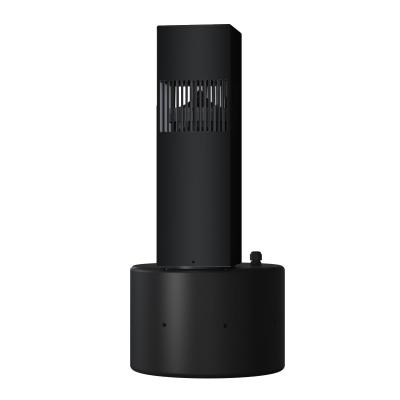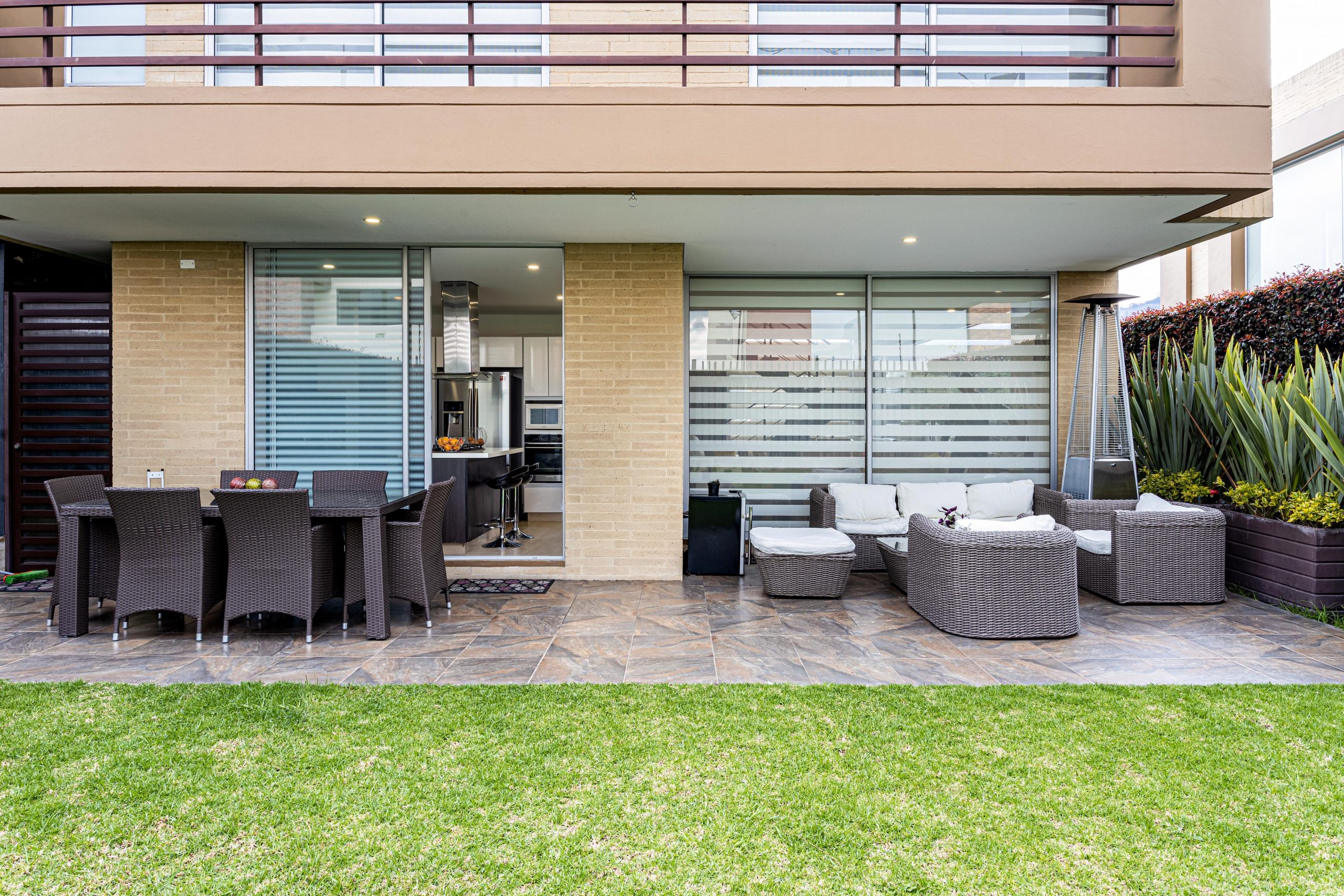As I am writing this, we are in the full swing of winter. The cold air and strong wind makes going outside a little uncomfortable. But the sweetest time of year comes around quickly. I am talking about the BBQ season, a time of year when all you want to do is spend the late hours in the garden with friends and family along with some good food and drink. Pairing rich high definition audio with this social experience is like choosing the correct wine with dinner. Get it wrong, and your garden speaker system could leave you feeling deflated. Get it right however, and your dinner party will be something to remember. But how do we choose the best garden speakers?
That’s where we come in. To help you choose the best garden speakers we have experience of a wide variety, from budget to premium, and from these experiences we know there are some things to look out for in your audio purchase. Let’s dive into this topic and help you make a decision on the best garden speakers for you.
“to be the best, my garden speakers not only have to perform well, they’ll also need to look great”
When choosing the right garden speakers that are best suited to your garden, the first thing some people consider important is how they look. Like the old English proverb, “children should be seen not heard” when it comes to the best garden speakers, it’s most certainly the opposite. That’s why many manufacturers have come up with clever ways to make these as discreet as possible.
Systems with multiple small satellite speakers that are designed to hide away in shrubs are most common. It is however sometimes not possible to hide speakers within shrubs, for example if you simply do not have any. A rocky landscaped garden for instance may only have concrete, stone and seating as a backdrop. This is where a rock speaker might be considered. They’re not for everyone however when choosing the best garden speakers you must always consider the environment they’re in, and when situated within a rocky environment the rock speaker could be perfect for the job.
Painted and textured to look like a particular type of rock, manufacturers such as Lithe Audio and Klipsch have created beautifully concealed speakers that blend into many environments. Styles like granite and stone and even custom shades can be provided with woofers from 5” to 8”. Lithe audio in particular has even got all in one rock speakers that need only to be connected to an outside power socket. Bluetooth streaming to these from your smartphone or tablet makes this a real simple setup with up to 10m wireless range, perfect for courtyard gardens small areas.

“I’m all about the bass, surely the best garden speakers need subwoofers?”
I cannot write an article about the best of garden speaker systems without speaking about covering the full frequency spectrum of audio. Subwoofers are designed to take care of the lower frequencies, in simpler terms it’s the boom boom that you get from a kick drum or the rumbling of a bassline. When using satellite spike speakers at least, you’ll most definitely want to add a subwoofer to your system. In order to keep down the size of a satellite speaker to ensure it is aesthetically pleasing to the eye, smaller drivers are used. But where does one put a huge subwoofer you may ask?
Modern garden subwoofers are designed to be fairly well hidden. They’re usually painted in a dark shade to blend into the scenery. Most can be buried deep under soil and you often only see what I would describe as a metal mushroom. The location of the subwoofer is trivial; whilst it ought to be positioned somewhere centrally in relation to the system, in a small system it may be to one side. Lucky for us, bass frequencies travel well so you won’t be concerned about missing out on any of that warm bass. Many familiar brands like Origin Acoustics, Sonance, Klipsch and Monitor Audio produce high quality landscape speakers and subwoofers, helping push forward garden speaker design. The Origin Acoustics Bollard Speaker is one in particular that includes a subwoofer as part of the satellite speaker design, therefore not requiring additional subwoofers. You bury the bottom section of the speaker which contains the subwoofer, leaving only a bollard up top with its mid-high frequency drivers protruding from the ground. Pretty cool huh?

“I live in England and it rains a lot here, should I worry about water damage?”
Speakers that are designed to be outside must be made to withstand all weather conditions. One such condition that’s most common in this country is the beautiful British rain. So to be considered among the best garden speakers, a garden speaker MUST be waterproof. There are different levels of waterproof….ness. We call this IP rating and it’s easy to be overwhelmed by the different levels so let’s briefly clarify this.
I shall use IP65 for my example. IP stands for ingress protection. The two numbers next to it, are a score for the product’s ability to protect against solids and liquids. In this case the product is rated as a 6 against solids and 5 against liquids.The higher the number the better and there is a chart you can use to compare the IP ratings. Most good quality garden speakers will use an IP66 rating. This essentially means it’s protected against solid ingress and high power water jets. So pretty decent, but some ingress is possible so you’ll not want to submerge the speaker in water.
“why do you recommend this particular amplifier? is it really that important?”
However basic an amplifier may seem, it’s actually a very complicated and important part of the signal chain. Get it wrong and you may not be able to hear a thing, you may blow your speakers or you may just not get the sound quality you would expect. So to make the best garden speaker system, the amplifier is a key factor.
Manufacturers often now offer DSP amplifiers with their garden speaker systems. DSP stands for digital signal processing, which basically means how the sound is manipulated to adjust to the room and/or speakers in order to make it sound as close to perfect as possible (which is subjective in itself as each brand has a signature sound, but I shall continue). Manufacturer DSP amps will often have quick settings that enable the commissioning engineer to tell the amp which speakers and how many are connected to the system. This will apply preset digital signal processing like EQ for that specific speaker system.
Higher quality amplifiers offer better linearity, which simply means the output is as close as possible quality to the original input. Lower quality amplifiers will often add noise/artefacts or even distortion to the signal. This is now what you want. This is not what you’d expect from the best garden speakers.
“Is cabling really that important?
Cabling is something often disregarded when it comes to garden speakers, and the best garden speaker systems, installed by the best engineers should always use the best cable for the job. This doesn’t mean gold plated or Fluorinated Ethylene Propylene cable. When I say best for the job, we should consider three main points: how many channels, where is the cabling installed and over what distance. Let’s look at these points individually to explain why.
You may have a stereo system where the speakers are required to be looped in series, you may have multiple mono runs, or you may have a 70v line style array. 9 times out of 10 we specify the former of the three. The two channel system we would often use is designed to feed the subwoofer with 2 channels of audio. These two channels are shared between all satellite speakers in the system also, and are looped between the satellites in series. Systems we often specify are designed in a way that impedances are kept at the optimum level for the amplifier (as mentioned in the amplification section) however there are ways to match impedances if you have larger systems with multiple cable runs, however we shall leave that for another time. For a typical system such as this, we would use 4 core speaker cable. This gives us the ability to run a single cable to all speakers and then cut and tap in each speaker to whichever pair corresponds to the channel we wish to feed it (Left or Right).
Almost always, in fact no I would say we would ALWAYS specify direct burial cable for garden speaker systems. This cable is protected against the elements with UV and water resistant outer sheath. When stripping this back you may find that the cable is oily or covered in a silicone like gel. It’s tricky to terminate, but worth the hassle as that stops the moisture getting in there, plus it also helps against unfavourable temperatures that this cable will inevitably be installed in.
Lastly, signal deterioration occurs over long distances. The longer distances may require a larger diameter cable to avoid affecting the sound quality. 16AWG is our default, however for distances over 30m with an 8 ohm load we may want to consider a larger diameter cable. An audiophile may want to consider a larger cable diameter at 15m with an 8ohm load due to cable resistance hitting 5% of nominal speaker impedance.
So that’s our idea of the best garden speaker system. I spoke about the aesthetics, frequency range, waterproofing, amplifiers and cabling. Oh I didn’t mention sources? I’ll save that for another article.

